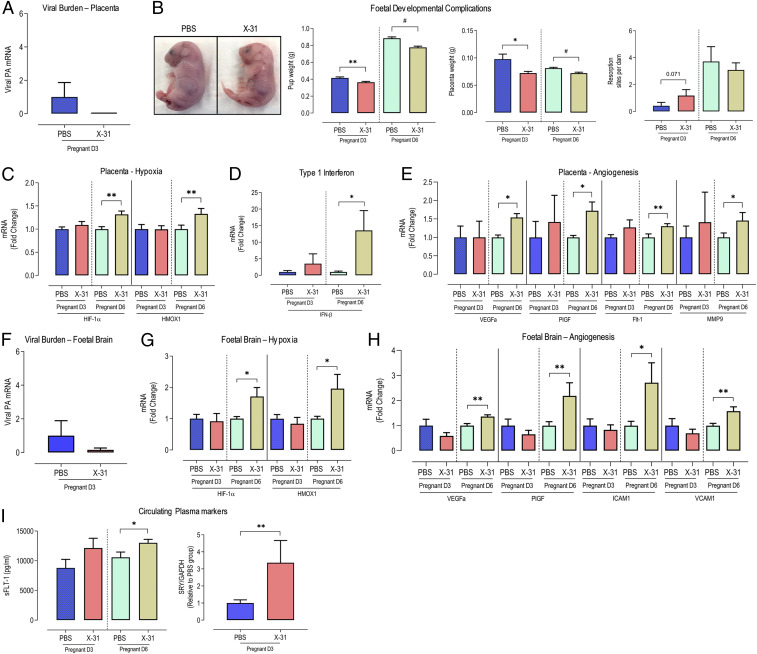Fig. 1.
Seasonal IAV infection in pregnant mice is associated with placental and fetal brain hypoxia and angiogenesis. Eight- to 12-wk-old pregnant (E12 gestation) C57BL/6 mice were i.n. inoculated with PBS or Hk-x31 (X-31; 104 PFU) for fetal assessment at 3 dpi (D3) and 6 dpi (D6). (A) IAV burden in placenta was quantified using qPCR by measuring the mRNA expression of the IAV segment 3 polymerase (PA). (B) Representative images showing pups from PBS- and X-31–infected dams. Pup weight (grams), placental weight, and number of resorption sites were recorded per dam. (C) Placental mRNA expression of hypoxic markers, HIF-1α and HMOX-1. (D) Placental expression of cytokine IFN-β. (E) Expression of angiogenesis markers VEGF-A, PGF, FLT-1, MMP9. (F) IAV polymerase (PA) mRNA expression in fetal brain. (G and H) Fetal brain mRNA expression of hypoxic markers HIF-1a and HMOX-1 (G) and angiogenesis markers VEGF-A and PlGF, ICAM1, and VCAM1 (H). (I) Circulating levels of sFLT in maternal plasma was measured by enzyme-linked immunosorbent assay. Quantification of circulating CFFDNA in maternal plasma was performed by ddPCR by measuring the ratio of the SRY gene (Y chromosome gene, fetal-derived) against GAPDH (maternal- and fetal-derived). Data are represented as mean ± SEM (pregnant PBS, n = 6 to 10; pregnant X-31, n = 6 to 10 of at least two or three independent experiments). All fold-change calculations of the X-31 group were measured via qPCR, performed against the PBS group within its respective timepoint, and normalized against GAPDH. Statistical analysis was performed by using an unpaired t test against the respective PBS control. *P < 0.05; **P < 0.01; #P < 0.0001.

